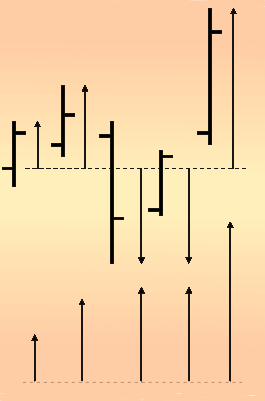Going APE
The Average Peak Excursion
by Chris Young
With a multitude of stocks to choose from, how do you know which ones are the best to trade, and how do you determine the best time frame to trade them?
AS traders, your objective is to maximize your rate of return while minimizing risk. Just to make sure it's clear what I'm writing about, let me define my terms. "Maximize" means that there are choices, approaches, and systems that give more positive results than others. "Rate" means that you are interested in the change per unit time - although rather obvious, we tend to focus too often on change rather than change per unit time. "Return" means that you want more back than what you put in. "Risk" points to the understanding that no system is perfect and choices must be made to preserve trading capital.
That clarified, average peak excursion (APE) is a tool for characterizing a stock's tendency relative to the terms defined. Using APE, you can:
- Select stocks that tend to yield higher-trading rates of returns than other stocks
- Select stocks for a higher relative reward compared with risk
- Determine the best trading time frame to maximize the rate of return for a given stock.
PEAK EXCURSION
Peak excursion is the measure of extreme price movement from an initial starting point. For my purposes here, I will always use the opening price as the initial starting point for a given analysis. The one-day peak excursion is defined as the larger of the absolute value of the high minus open or low minus open. The two-day peak excursion is the larger of the absolute value of the two-day high minus the first-day open and the two-day low minus the first-day open. This process can be seen in Figure 1. The fourth-day extreme from first-day open is less than the third-day extreme, so the third-day extreme is used for the fourth day.

FIGURE 1: EXCURSIONS. On the upper chart are the excursions from the initial open. On the lower chart you see peak excursions from the initial open. Note that the fourth day extreme from the first day is less than that of the third day so the third-day extreme is used for the fourth day.
...Continued in the April issue of Technical Analysis of STOCKS & COMMODITIES
Excerpted from an article originally published in the April 2006 issue of Technical Analysis of STOCKS & COMMODITIES magazine. All rights reserved. © Copyright 2006, Technical Analysis, Inc.
Return to April 2006 Contents